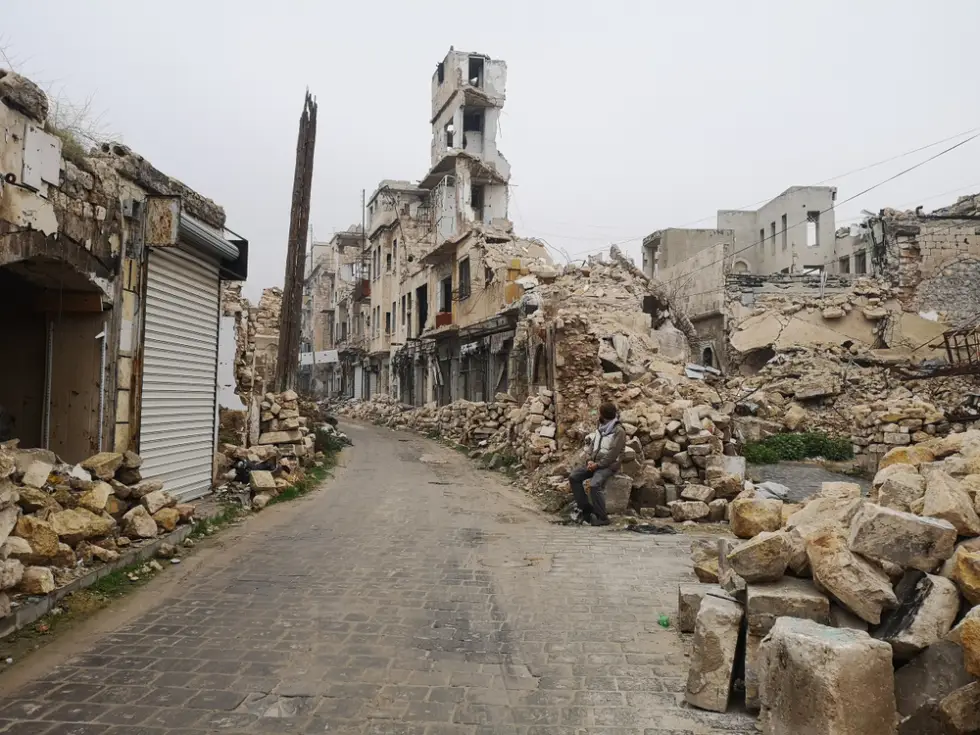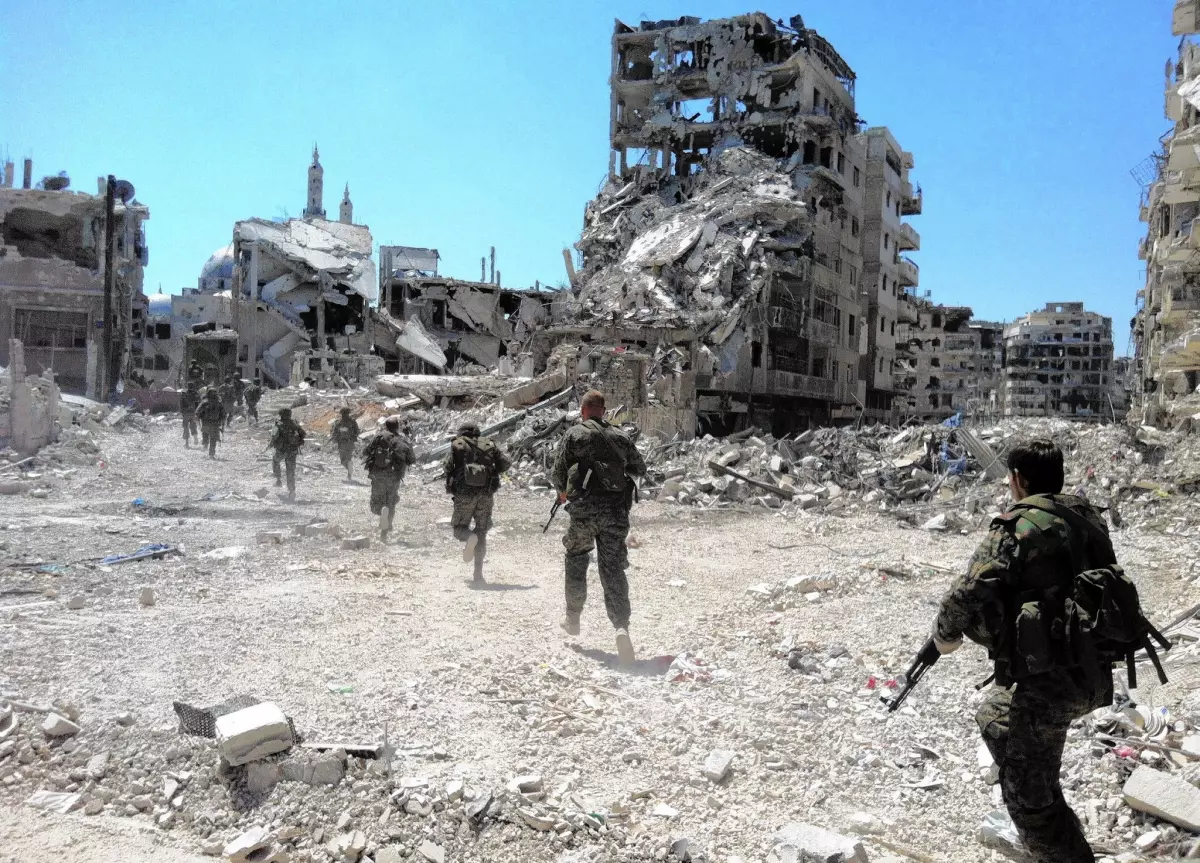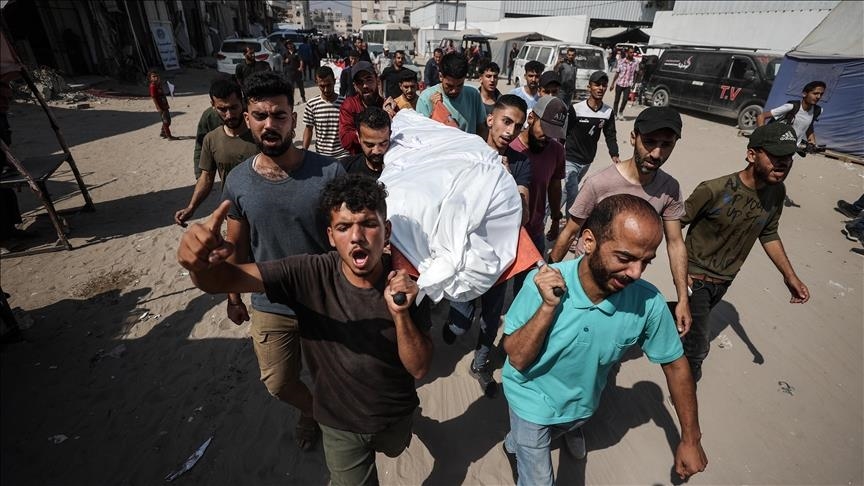Introduction: The Hidden Costs of America’s Regime Change Strategy
In 2011, peaceful protests against Syrian President Bashar al-Assad’s government quickly escalated into a brutal civil war. What began as a domestic uprising soon transformed into a proxy war, with foreign powers—including the United States—pouring weapons, money, and fighters into Syria under the guise of supporting “moderate rebels.”
But there was a fatal flaw in this strategy: many U.S.-backed factions either collapsed, defected to extremist groups, or committed war crimes.
- Over 500,000 Syrians have been killed since 2011.
- 12 million displaced, creating Europe’s worst refugee crisis since WWII.
- Extremist groups like Hay’at Tahrir al-Sham (HTS, formerly Al-Qaeda’s branch in Syria) gained territory—often using U.S.-supplied weapons.
This article examines how the Syria Proxy War became a case study in failed foreign intervention, exposing how U.S. support for rebel factions fueled extremism, prolonged suffering, and destabilized the Middle East.
TL;DR – Key Takeaways
✅ The U.S. spent billions arming Syrian rebels, many of whom later joined extremist groups.
✅ Declassified documents show warnings that backing rebels would empower jihadists—but the policy continued.
✅ CIA programs like “Timber Sycamore” flooded Syria with weapons, some ending up with Al-Qaeda affiliates.
✅ Media narratives often whitewashed rebel atrocities while exaggerating their “moderate” credentials.
✅ The conflict created a power vacuum, allowing ISIS to rise and drawing in Russia, Iran, and Turkey.
1. Background: Why Did the U.S. Intervene in Syria?
A. Regime Change & Geopolitical Rivalries
The U.S. had multiple motives for involving itself in Syria:
- Countering Iran – Syria was Iran’s closest Arab ally, and weakening Assad meant weakening Tehran’s influence.
- Pipeline Politics – A proposed Qatar-Turkey gas pipeline (blocked by Assad) was a factor in Gulf states’ push for intervention.
- The “Arab Spring” Domino Effect – After Libya’s fall, Washington hoped Assad would be next.
B. The Myth of “Moderate Rebels”
The Obama administration claimed it was only supporting “vetted, secular” fighters. But internal documents reveal skepticism:
- A 2012 Defense Intelligence Agency (DIA) memo warned that extremists were dominating the opposition and that toppling Assad could lead to a “Salafist principality”.
- Former CIA officer Philip Giraldi admitted: “We were arming people who were closely linked to Al-Qaeda.”
2. How the U.S. Armed the Rebellion (And Armed Extremists)
A. CIA’s “Timber Sycamore” Program
A covert operation launched in 2013, Timber Sycamore supplied rebels with:
- TONs of weapons (including TOW anti-tank missiles)
- Training in Jordan and Turkey
- Funding from Saudi Arabia and Qatar
The problem? Many “moderate” groups merged with or sold weapons to jihadists.
- A 2017 BBC investigation found U.S. weapons in the hands of Al-Qaeda-linked fighters.
- The “Division 30” debacle – A Pentagon-trained rebel unit defected to Al-Nusra (Al-Qaeda) within days.
B. The White Helmets Controversy
The White Helmets (Syria Civil Defense) were praised in Western media as neutral rescuers. But evidence suggests:
- Ties to extremist factions – Some operated exclusively in jihadist-held areas (source).
- Staged propaganda? Reports emerged of fake chemical attack videos used to justify U.S. airstrikes.

3. Blowback: When U.S.-Backed Rebels Joined Extremists
A. Al-Qaeda’s Takeover of the Rebellion
By 2015, Al-Nusra Front (Al-Qaeda’s branch) had absorbed dozens of U.S.-backed factions, including:
- Harakat Hazm (received U.S. TOW missiles, later defected).
- Syrian Revolutionary Front (collapsed after Al-Nusra attacks).
B. The Rise of ISIS
The power vacuum created by U.S.-backed rebels helped ISIS seize territory in 2014. Ironically, the U.S. then spent billions fighting an enemy it helped create.
- Former Pentagon official Michael Maloof admitted: “We trained ISIS fighters in Jordan.”.
4. Human Costs: A Nation Destroyed
- 500,000+ dead (UN estimate).
- Chemical attacks (both Assad and rebels accused).
- 12 million displaced—triggering a European refugee crisis.
5. Media Complicity: Selling the Proxy War
- CNN, BBC, and others echoed State Dept. talking points on “moderate rebels.”
- Independent journalists like Robert Fisk were rare voices exposing rebel atrocities (source).
6. Legacy: A Failed Policy with Global Consequences
- Russia’s military intervention (2015) to back Assad.
- Turkey’s invasion (2018-19) to crush U.S.-allied Kurds.
- Syria remains fractured, with no end in sight.
FAQ: Unanswered Questions About the Syria Proxy War
Q: Did the U.S. knowingly fund extremists?
A: Declassified docs show warnings were ignored, but whether it was deliberate remains debated.
Q: Are there parallels to Afghanistan in the 1980s?
A: Yes—both cases saw U.S.-backed militants later turning against Washington.
Q: What was the White Helmets’ true role?
A: While they saved lives, evidence suggests some members collaborated with jihadists.
Conclusion: A Proxy War That Backfired
The Syria Proxy War stands as one of America’s greatest foreign policy disasters. By arming unpredictable rebels, the U.S. prolonged the conflict, empowered jihadists, and left Syria in ruins.
What’s the lesson?
- Proxy wars create chaos, not stability.
- Media must scrutinize official narratives, not amplify them.
- Accountability is needed for those who pushed failed policies.
“Was the Syria Proxy War a strategic blunder or a deliberate destabilization? Share your thoughts below.”
References & Further Reading
- BBC: How US weapons ended up in jihadist hands
- Original (2017):
- Summary: Investigates how US-supplied weapons to Syrian rebels were diverted to jihadist factions like Hayat Tahrir al-Sham (al-Qaeda affiliate).
- DIA Memo Warning of Extremist Takeover (2012)
- Declassified document (2015):
- Key point: The Defense Intelligence Agency (DIA) warned in 2012 that arming Syrian rebels could lead to a “Salafist principality” (i.e., extremist state) benefiting al-Qaeda.
- NYT: Pentagon-trained rebels defected to Al-Qaeda
- Original (2015):
- Summary: Reports that Division 30, a US-trained rebel group in Syria, handed weapons to Al-Qaeda’s Nusra Front within days.
- The Guardian: White Helmets’ jihadist ties
- Original (2016):
- Context: Critiques claims of neutrality, citing coordination with jihadist groups (e.g., Nusra Front) in rebel-held areas.
Additional Resources
- ProPublica’s Investigation (2017):
- WikiLeaks (2015): DOD/SOF documents on Syria rebel training (search for “Timber Sycamore”)
Notes on Accessibility
- Some links may be paywalled (e.g., NYT). Use archive.today to bypass restrictions.
- For the DIA memo, the declassified PDF is hosted on US government archives.



